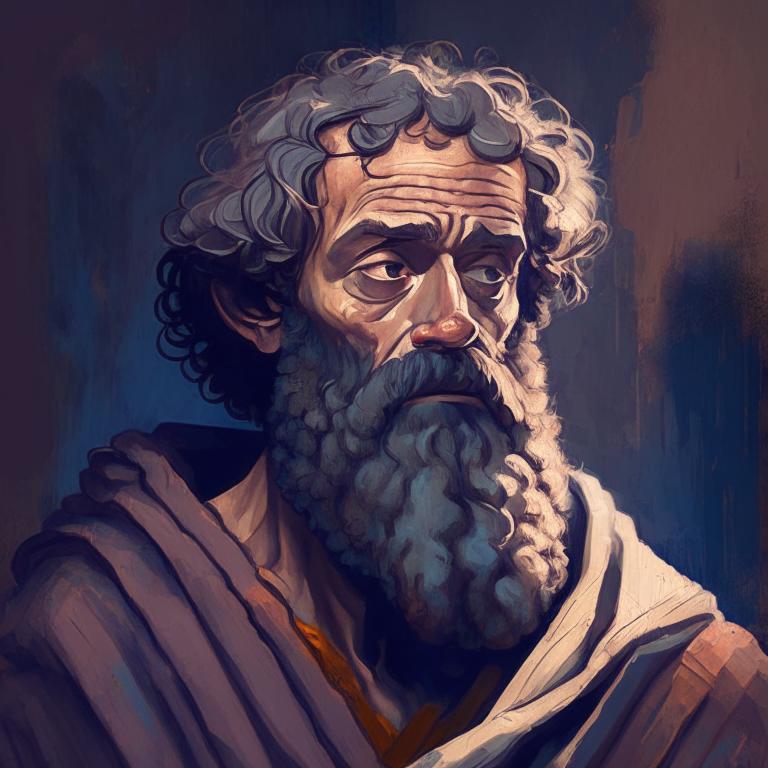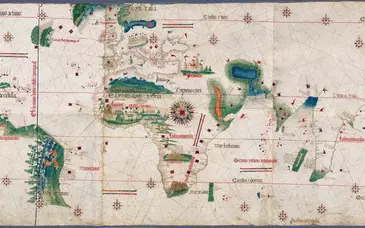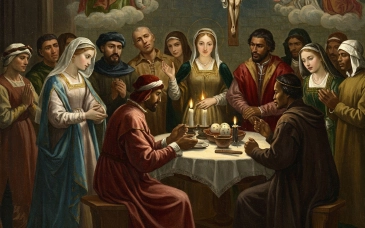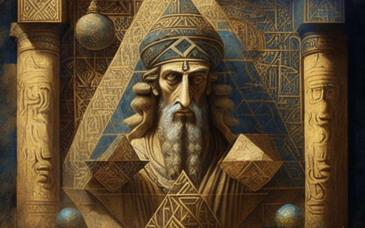Historical Background

So much is known about Peter from the New Testament that all cannot be descibed in detail. More is know about him than any other apostle. A native of Bethsaida in Galilee he was a fisherman. He probably was in business with his brother Andrew and James and John, sons of Zebedee. He was also married. Mark 1:30 He was a disciple of John the Baptist, when he was introduced to the Lamb of God by his brother Andrew. When Jesus saw Peter he said 'You are Simon son of John. You will be called Cephas'. John 1:42

Name
The man who figures generally as the leader of the twelve disciples in the New Testament usually bears the name Peter. This name was given to him by Jesus. Luke 6:14 Peter is 'petros' in Greek and Rock is 'petra'. In classical Greek, the distinction between these is well known. Petra means a rock while petros means a piece of rock or a stone. His earlier name was Simon, a common name among Greeks and Jews.
Sometimes the name is used together in the Gospels. The Aramaic equivalent of Peter is Cephas which also means Rock. John 1:42 There is a definite play on words in Jesus' statement but no one but Jesus understood their full meaning.
Character
A study of the life and character of Peter reveal some very noble traits. One commentator describes him like this. 'a readiness of spiritual insight; a warm, eager, impetuous temperament; an unrestrained yielding to the immediate impulse; a prompt and forcible utterance, by word and act, of every strong, however varying, conception and emotion.' Lillie
He was devoted and committed to Christ. His enthusiasm and boldness are worth copying. But he also illustrates the danger of misdirected and superficial enthusiasm. Some of the sharpest rebukes in the New Testament were directed at Him. 'Get thee behind me, Satan: Thou art an offence unto me; for thour savourest not the things that be of God, but those that be of man.' Matthew 16:23 When walking on the water and Peter turned his eyes away from Jesus, Jesus said to him 'O thou of little faith, wherfore didst thou doubt?' Matthew 14:31
He teaches us that enthusiasm and devotion must be tempered by a balanced and sanctified perspective. Peter could be overconfident in his enthusiasm, at times bordering on arrogance. But in spite of all he show a boldness in his loyalty and devotion to Christ and the gospel.
Ministry
Peter returns to his home in Capernaum. Then about six to nine months later all four fishermen were recalled by Jesus by the Sea of Galilee where they were casting their nets into the sea. Matthew 4:18 Overwhelmed by the supernatural catch of fish after a night of fruitless fishing Peter confesses his unworthiness at Jesus' feet and Jesus calls them to be fishers of men.

Peter held the position of leadership in the circle of the Twelve. His name is listed first in all four lists of the disciples. He was also one of the inner circle of the three or four intimate apostles of Jesus. Often he is their spokesman.
He was the first disciple to follow Jesus with his Brother Andrew. The first to be made a fisher of men. Peter was always the first to respond to our Lord. When asked who do men say that I am. Peter replied 'Thou art the Christ, the son of the living God.' Matthew 16:16 When Jesus asked if these disciples would also desert Him Peter speaks out...'Lord to whom shall we go. You have the words of eternal life. We believe and are sure that you are Christ the son of the living God.' And yet he was the first to deny our Lord three times.
The first to defend him with a sword. John 18:10-11 The first to enter the empty tomb. The first one of the disciples Jesus appeared to after his resurrection. Luke 24:34
Then we have those beautiful words of Jesus to Peter as he commissions Peter to the Pastoral office. 'Feed my Sheep' John 21:17 Here Jesus lays out his destiny.
So its not surprising to see in the first twelve chapters of Acts that Peter is the spokesman for the church at Jerusalem. The first to speak at Pentecost and preached a sermon that pierced 3000 hearts. The first apostolic miracle was done by Peter as he heals the crippled beggar. Then Peter preaches before the Sanhedrin in holy boldness and on two occasions was miraculously released from prison by an angel of the Lord. He was also the first to speak up for the Gentiles after a vision, before the council of Jerusalem. In Galatians 2:7 we read that Peter was appointed as the preacher to the Jews as Paul was the preacher to the Gentiles.
Peters fiery temperament , quick resolve, fearless courage and unreserved outspokenness were to be refined and glorified by his love for Christ and power of the Holy Spirit to truly make Him the rock foundation of the Church. The play on words is much clearer in the Aramaic than in the Greek or English. Jesus apparently actually meant that Peter is the rock upon which He would build His Church. Peter's vital role in the Early Church as shown in Acts substantiates this interpretation.
However Peters place was among equals. Peter was not their Bishop or Pope. There is not a shred of evidence in the New Testament that Peter posed as a pope or was recognized as one by others. He was their spokesman or representative on the same level. Peter never claimed any outward superiority over the other disciples.
The one problem with this interpretation is that it would mean that the church was built upon a imperfect human being. But this is precisely what Jesus says here. Upon this Rock I will build My Church. The church will be built by Christ using the bring and mortar of fallible human beings and Christ himself as the Chief cornerstone. 1 Peter 2:4-8; Ephesians 2:20
But it is with a solidness that Christ will build his church. It was Peters confession which was his strength. His faith in Christ would make the Church strong. It was not only Peter but people like Peter that the Church would be built upon. Ephesians 2:20
Rome
One cannot deal with Peter and not address the matter of Peter and Rome. The Roman Catholic Church maintains that Peter visited Rome and became Pope of the Church. However the New Testament does not state that Peter went to Rome. Mark, who was with Peter when he wrote 1 Peter 5:13 is known to have been with Paul in Rome. Colossians 4:10; Philemon 24
That Peter went to Rome is well documented by early Christian literature. The earliest reference is in a letter written by Clement, bishop of Rome(A.D. 88-97) to the Corinthians. Tertullian (A.D. 200) mentions the death of Paul and Peter at Rome under Nero's persecution. Eusebius also mentions Peters death at Rome. It is possible that Peter reached Rome during the middle 50's.
The claim of the Roman Catholic Church that Peter founded the church at Rome and was for twenty-five years its bishop is without support in the earliest testimony. The growing reverence for Peter in the early church is clear from the many false writings ascribed to him.
Death

Apparently Peter was a victim of the violent anger of Nero vented upon the Christians in A.D. 64. In John 21:18,19 we read of the prediction of Peters death. The Acts of Peter and Eusebius citing Origen, report that Peter insisted on being crucified head-downward.
The location of the tomb of Peter and the identification of his bones have been extensively debated in the 20th century. On June 26 1968 Pope Paul VI announced that the bones of Peter had been positively identified by Margherita Garducci, who claims to have located the bones that were originally in a marble chest found in 'Wall G' under St. Peter's Church in the Vatican. But since St. Peter's Church was developed as a Christian burial ground, precise identification of certain bones as Peter's is very hard if not impossible.
It is hard to dispute the fact that Peter spent the latter part of his life at Rome, that he died a martyr's death, and that he was buried in the general vicinity of the Vatican. But any more details than these are impossible with the information we presently have.







